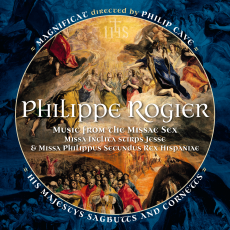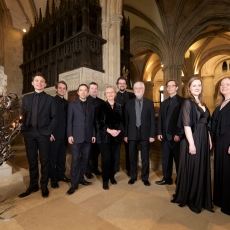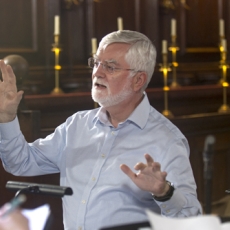Magnificat - Rogier: Missae Sex - SA-CD.net
This is the third volume in Magnificat's traversal of Philippe Rogier's choral works. Magnificat, under the direction of Phillip Cave, seem to be back on form. Rogier (c.1561-1596) was one of a procession of singer/composers from the Low Countries (then occupied by the Spanish) recruited to work at the Spanish Court.
Rogier began as a boy treble in the service of Phillip II of Spain in his huge palace, The Escorial, near Madrid. He became a favourite of the King, who was very attentive to his musical establishment, awarding Rogier non-residential positions at the church of Yvoir and Tournai Cathedral, then finally appointing him Maestro di Capilla at the age of 25. This attention was worthwhile to the Court's splendour, as Rogier was able to scale the heights of late Renaissance polyphony, extracting the most emotional responses from the texts he set, and writing magnificently for celebrations in the Royal Chapel.
Phillip II also arranged for many of Rogier's works to be published, and the two masses on this disc appear in the volume "Missae Sex". 'Missa Inclita stirps Jesse' is a parody mass, based in a motet by Jacobus Clemens (non Papa) beginning "The Stem of Jesse". The parody technique, in which new works were based on lines from existing works, usually motets, was still very much in vogue. The Mass is helpfully prefaced by Magnificat's very clean a cappella performance of Clemens' motet. The Mass itself is sung with female altos in the top voices, two voices for each for the four parts (alto, tenor, baritone, bass). Beautifully articulated, with inner voices emerging to emphasise important textual points, this is a luminous performance, but I felt a little more pace would have helped it flow better.
The King's Sagbutts and Cornets bring their period instruments to join in the Missa Philippus Secundus Rex Hispaniae, a tribute from Rogier to his Master and namesake. Here the melodic basis for the mass is a musical cipher, in which Rogier assigned each syllable of Phillip's name and style to a musical note. This cipher is repeated several times in each of the mass sections, sometime sounded out by sackbuts or cornets. Recent research has indicated that Renaissance polyphony was much more frequently heard with instrumental accompaniment than previously realised, especially in the more affluent courts and on festive occasions. In this case, the beautifully recorded performance brings a real sense of celebratory opulence to the rather humble St George's Church in Cambridge. The traditional Spanish grouping of tenors, baritones and basses with separate parts adds depth and richness to Magnificat's highly cultured sound.
In between the two masses, and between the Credo and Sanctus of the King Philip Mass, we are given two short organ solos by Antonio de Cabezón, organist to the Royal Chapel, which are also parody-based. These interludes relieve the choral sound somewhat, refreshing the ear and making the whole disc well-programmed.
Although certainly not reflecting the vastness of the Royal Chapel in the Escorial, Linn's 5.1 track is has a good church acoustic to support the singers and instrumentalists, who are arrayed in a semi-circle before the listener. One can easily locate the individual voices, and the positional spacing on a wide sound stage helps the ear to pick out the voice lines easily. There is, of course, less three-dimensionality and atmosphere in the stereo track.
It is a remarkable fact that we are now able to listen to the music which so pleased the ears of the great Phillip II, the king who married Mary Tudor in order to join the Spanish and English Thrones. But she died after only four years as Queen, and was followed by Elisabeth I, her Protestant sister, against whom Philip sent the ill-fated Spanish Armada in 1588, all within Rogier's short lifetime. Not only does this disc offer a fine musical experience, but also a voyage into history.


